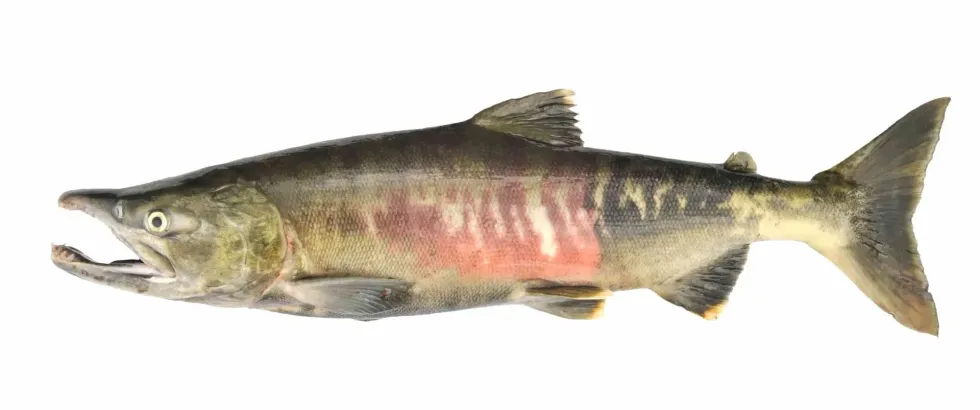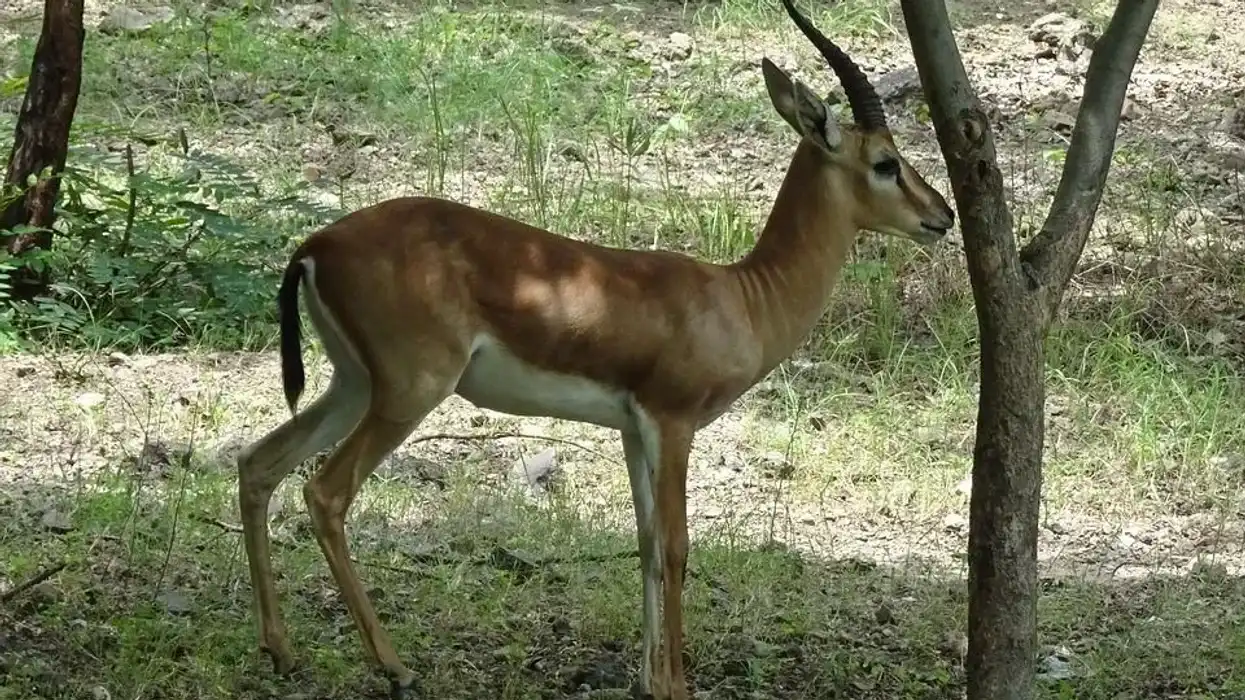The Chum Salmon (Oncorhynchus keta) belongs to the family of Salmon. These fish are anadromous, meaning their lives have a distinct divide between time in the freshwater as well as the oceans.
It's a Pacific salmon that's also known as Keta Salmon or Dog Salmon, and it's sometimes sold by the name of Silverbrite Salmon.
The exact name Chum Salmon comes from the Chinook Jargon language in which the term 'tzum' means spotted or marked, whereas 'keta' is derived from the Evenki language, said to be a dialect of Russian sometimes, of Eastern Siberia.
Chum Salmon are one of eight species of Pacific salmonids in the genus Oncorhynchus, and they belong to the family Salmonidae. Chum Salmon are Pacific salmon populations that grow to be among the largest, second only to chinook coho salmon in adult size, with individuals weighing up to 42 lb (19 kg).
Chum Salmon breeds nearly entirely in coastal streams.
Since emerging from the gravel that coats their red (nests), juveniles migrate to seawater almost immediately (spawning bed). This ocean-type migratory behavior compares with coastal cutthroat trout, steelhead, coho salmon, and other forms of chinook and sockeye salmon populations, which typically migrate to the sea at a grander scale following months or years of freshwater rearing.
This means that juvenile Chum Salmon survival and development are more dependent on favorable estuarine and marine conditions than on freshwater conditions.
Another distinction between the species Chum Salmon and other freshwater Salmon is that they form schools, presumably to minimize predation, particularly if their movements are coordinated with swamp predators.
Several older fishes tend to follow a latitudinal pattern, with older fish being generally found in the northern part of the range.
Many studies have looked into the age at which Chum Salmon mature, and it appears that most mature between three and five years of age in both Asia and North America, with 60-90 percent of the fish maturing at four years of age. However, the north has a higher proportion of five-year-old fishes.
In contrast, the south, which includes locations such as British Columbia, Washington, and Oregon, has a higher proportion of three-year-old fishes.
If we answered your question of 'What is a Chum Salmon?', do not forget to go through our other articles on the Codfish or the Milkfish.
Chum Salmon Interesting Facts
What type of animal is a Chum Salmon?
The Chum Salmon is a type of fish.
What class of animal does a Chum Salmon belong to?
The populations of Pacific Salmon include several species; Chum Salmon is one among them. They belong to the class Actinopterygii.
How many Chum Salmon are there in the world?
An appropriate study regarding their population has not yet been conducted.
Where does a Chum Salmon live?
The Chum Salmon has the most incredible natural distribution of all Pacific salmon species, and they travel the furthest within the genus Oncorhynchus. They are known to travel far into Asia's Amur River basin, all the way up the Yukon River.
The species even extends up to the far southern tip of the ocean.
The most famous salmon species in Yukon is the Chum Salmon. From late summer to early winter, they spawn in the main tributaries of the Yukon River, including the White, Stewart, Pelly, Porcupine, and Teslin rivers.
They migrate far south in thousands of kilometers up the Mackenzie River in smaller numbers. Chum can be found in the open ocean of Japan, Korea, and the Bering and Okhotsk seas, and British Columbia in Canada.
They can be found in small numbers near the Arctic Ocean, from the Beaufort Sea to the Laptev Sea.
The Chum Salmon breed was also found in the river of San Lorenzo close to Santa Cruz, California, in 1915 and the Sacramento River near north California in 1950-1960. Half a dozen of the Chum Salmon were said to be counted in Lagunitas Creek, around 25 mi (40 km) towards the north of San Francisco, CA, in 2017.
What is a Chum Salmon's habitat?
The breeding pair enter freshwater, and thus the Chum Salmon or the Calico Salmon are born in freshwater streams and rivers and then migrate to the ocean to eat and develop. They typically build their nests in the lower reaches of rivers and streams that are within 60 miles of the sea.
Who does Chum Salmon live with?
The Chum Salmon shows attributes of both living in groups and being alone.
How long does a Chum Salmon live?
Chum Salmon live for three to five years on average, and they mature at the age of five years.
How do they reproduce?
The chum Salmon reproduces between the ages of two and seven, it spawns at an average age of four. They're around five to ten pounds at this stage.
Owing to the fact that they spawn later than other fishes, they have been named autumn or fall salmon. They begin joining open rivers and enter fresh water in late June, and hit their spawning grounds in November or December.
In the same river, there are occasionally summer and fall flows. Summer runs have fewer fish, and they cannot swim as far upstream as their winter counterparts. Even so, some races have been known to reach 2,000 miles.
Pink and Chum Salmon breed in similar locations and usually prefers shallow open streams and intertidal areas. They also tend to spawn in shallow medium-sized gravel with a medium water supply.
In their nests, the female lays typically between 2,400-3,100 eggs (redds). Immediately after they lay their eggs, all the female Chum Salmons die.
Males turn olive green or grey during the spawning season, and their sides become red with longitudinal green or purple streaks, earning them the nickname 'calico salmon'. It grows the hooked snout that all Pacific salmon have.
Males grow large teeth during the spawning process. Females in the spawning period have a black line along the lateral sides and are similar to males in appearance. Juvenile Chum Salmon has between sex and 14 parr marks and is slim.
What is their conservation status?
The Endangered Species Act has designated two populations of Chum Salmon as vulnerable species, the Hood Canal Summer Run is one of them, and the Lower Columbia River is the other category. These are vulnerable because of the fishing and fishery business.
Chum Salmon Fun Facts
What does Chum Salmon look like?
How cute are they?
Chum Salmons, even though they are also called Dog Salmon, are not cute like dogs. They may only be considered to be tasty.
How do they communicate?
Not much is known about their communication. The anecdotal shreds of evidence suggest sound, color, bioluminescence, motion, electrical impulses, and smell to be the most common ways they do this.
How big is a Chum Salmon?
Chum Salmon is one of the largest open Pacific salmon species, only second in size to Chinook salmon. They grow up to 3.6 ft (1.1 m) which is as big as a human child.
How fast can a Chum Salmon swim?
The pacific salmon species travel horizontally at speeds ranging from 1.5-3 kilometers per hour.
How much does a Chum Salmon weigh?
The average adult Chum Salmon weighs between 9.7-22 lb (4.4-10 kg).
What are their male and female names of the species?
No name as such has been given to the males and females of this species.
What would you call a baby Chum Salmon?
Fingerlings are the name given to a juvenile Chum Salmon.
What do they eat?
When they swim downriver, young Chum Salmon feed on fish, as well as insects and aquatic invertebrates in estuaries and near-shore marine environments. Copepods, fishes, mollusks, squid, and tunicates are among the foods consumed by adults. Juvenile Chum Salmon are in turn preyed upon by a variety of fish and birds.
Are they dangerous?
Chum Salmon, as a species, pose no threat to humans.
Would they make a good pet?
Chum Salmons are not known to be kept as pet fishes. You may find them in certain aquariums, but mostly to be displayed as part of a restaurant's menu.
Did you know...
Wild Chum Salmon are semelparous, ensuring they only reproduce once before dying.
On the spawning runs to their natal pools, the males of this salmon population are better known for their large canine spawning teeth.
They are only somewhat smaller than their Pacific salmon counterparts, chinook salmon.
How to cook Chum Salmon?
Are you wondering, "Is Chum Salmon good to eat?" Well... well, we've got you covered! Like most dishes, if cooked well, the Chum Salmon is one of the tastiest fish out there, proving why they are so popular.
The best method to cook Chum Salmon is baking or cooking in olive oil, but the taste is subjective and might differ from individual to individual.
Is Chum Salmon the same as pink Salmon?
Want to know the differnce between the Chum Salmon vs. pink Salmon? These two fishes differ in fat percentage and taste. People prefer one over the other. Pink Salmons are smaller than Chum Salmon.
Here at Kidadl, we have carefully created lots of interesting family-friendly animal facts for everyone to discover! Learn more about some other fish, including sucker fish or longhorn cowfish.
You can even occupy yourself at home by drawing one on our Chum salmon coloring pages.









